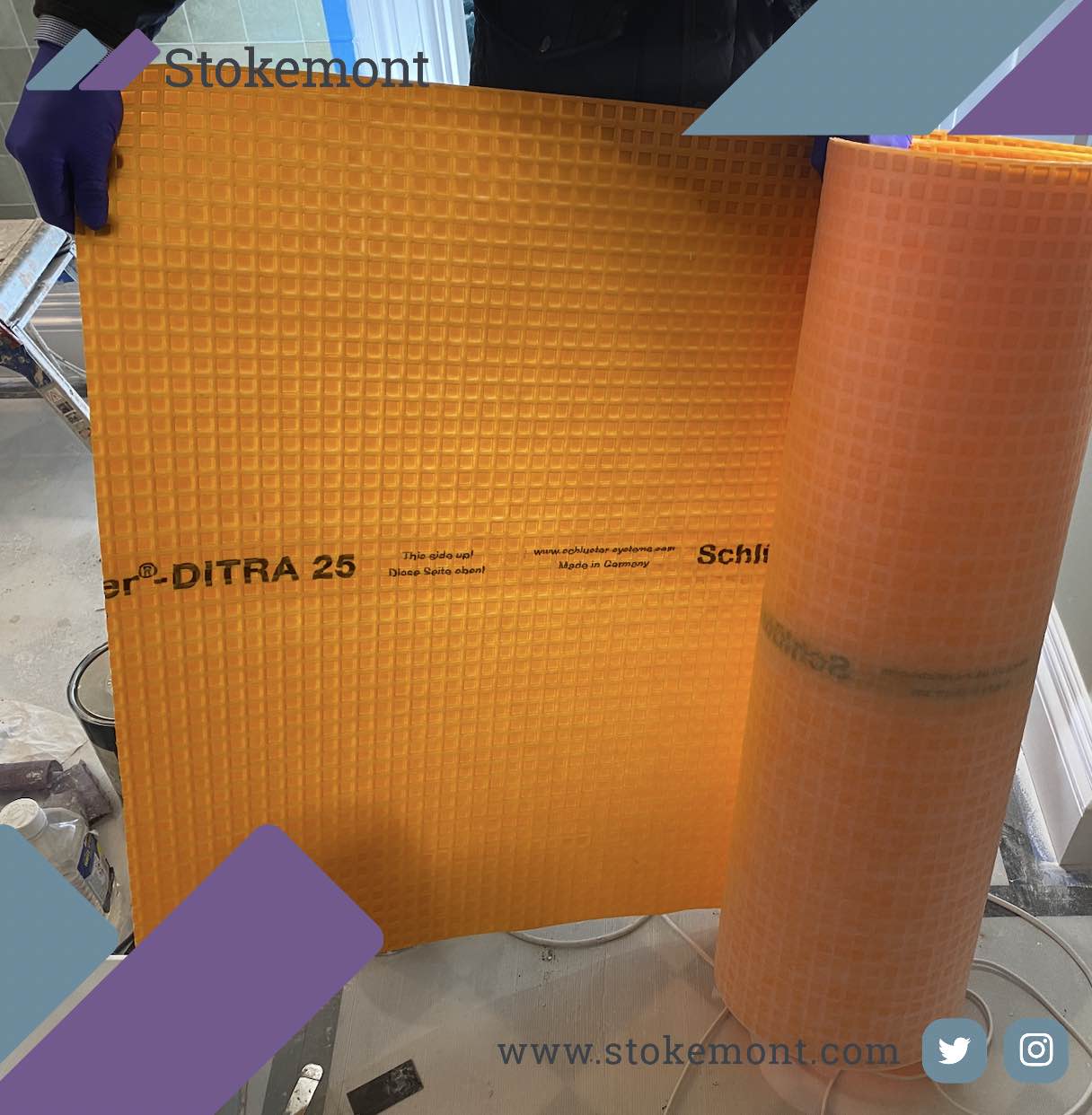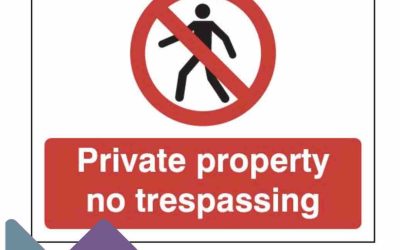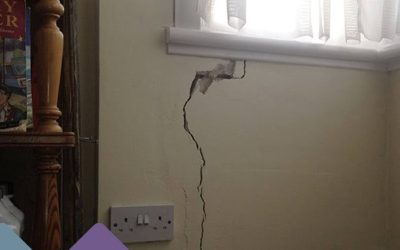In this week’s blog post we will be looking at Waterproofing floors, specifically, Schluter DITRA Matting, the benefit of the membrane and the overall review of the usability of the product.
This is one of the most commonly used solutions when a leaseholder is undertaking licence for alterations works to their property and changing dry rooms (bedrooms, living rooms, hallways, etc) to wet rooms (kitchens, bathrooms, utility rooms).
The installation of a waterproof membrane will not only safeguard against leaks, it will also ensure better sound deadening qualities and is one of the most commonly requested freeholder inclusions for licence for alterations for floor changes.
The Need to Waterproof Explained:
Many rooms within a property, to name a few; bathrooms, laundry rooms, kitchens, basements and dining rooms. Generally speaking, naturally over a period of time sustain many interactions with water or moisture, or other forms of water based reactions such as condensation from a lack of ventilation in areas such as bedrooms, kitchens or bathrooms.
Water ingress to floors cause many common reactions which can include swelling, softening, undulation, rotting, cracks to tiles and debonding to floor finishes. The latter mentioned all can be a result of water or moisture getting in-between your flooring, which may I add can be
can be caused by simple day to day occurrences such as wet footprints trailing from the bathroom or accidental spills from toppled drinks. These, eventually believe it or not, can all lead to issues such as weakened floors which can be identified by creaking and unlevel flooring.
DITRA Matting
DITRA Matting is a waterproof polyethylene membrane with a robust design, which as a result provides high vapour diffusion density. The product is universally known for providing support, resistance and longevity to floors as well as wall finishes. The membrane has a grid like structure of square cavities with a fleece material to the underside. The cut back cavities wisely provides space for thermal and moisture changes throughout the subfloor beneath.
DITRA Matting Main Attributes
The DITRA Matting has a number of purposes that make the product an ideal invention for tile installations:
- As tile coverings are not waterproof, the DITRA Matting provides a distinct waterproof barrier, credits to the waterproof polyethylene membrane, given that the DITRA matt will sit in-between the subfloor and the tile finish above, the membrane will soak and absorb water from the tiling above, adequately preventing any water ingress reaching the subfloor beneath. The matting creates a certified bonded waterproofing assembly with the tile covering.
- The design of the DITRA matt which entails cut back square cavities, provides great vapour management, the openings allow for excess moisture and vapour to escape thus allowing the subfloor to breathe, allowing any moisture trapped in the substrate to evaporate.
- The matting provides great crack bridging. Given that the subfloor and tiled finish above will generally move throughout the lifespan, the rib structure of the DITRA Matting adapts well by allowing both the subfloor and the tiles above to move independently. This avoids obsessive movement or stress cracks from the subfloor continuing through the tiled finish, in absence of the DITRA matt, this would normally result in movement cracks appearing on the finish or debonding of the tiles.
- Load distribution is sufficiently improved via the column like structures moulded within membrane as previously discussed, whilst allowing the subfloor and tile finish to move independently, the design intelligently also provides additional support by transferring load down to the subfloor.
- The DITRA Matt is one of the simplest waterproofing materials to install. An adhesive would need to be laid above the subfloor, and adequately spread across the surface. The DIRTA Membrane is then to be laid directly on top and pressure spread with a tool with an adequate tool with a flat surface, such as a forge steel plastering trowel or equivalent until well bedded. There’s hard labour necessary such as cutting into concrete, inhaling dust, nailing or screwing materials down.
Using DITRA Matting
DITRA matting prevails in its usability when installing underfloor heating and provides a robust layer between the underfloor heating and the tiles.
DITRA matting can be utilised on an extensive range of areas and surfaces which include:
- Radiant Heated Screeds and Masonry/mixed substrates
- Mortar screeds
- Concrete
- Gypsum based screed
- Balconies
- Rooftop terraces
- Plywood and chipboard
- Stucco / plaster
It should be noted that they are some complexities when it comes to installing the material, you have to be fully abreast with the subfloor suitability to make sure they are level, load-bearing, and compatible with the materials to be used as DITRA matting can be bespoke in its form.
Any water proofing is going to drastically improve the water barrier between the subject flat (the one undertaking the works) and those that are beneath it. If you’re planning on undertaking alterations work to your property that fall within the realm of the alterations clause of your lease, give our team of qualified surveyors a call today and we will be more than happy to advise you of what type of precautions and provisions you will need to install to best protect your neighbours and meet best practice.




